The Norwegian Panser Bataljonen battle group on TRIDENT JUNCTURE 2018 fielded a small number of the new turret-less CV90N variants, reports Bob Morrison.
~
In June 2012 the Norwegian Government placed an order with BAE Systems Hägglunds and Kongsberg Defence for the upgrade of their fleet of 103 CV9030N Stormpanservogn armoured infantry fighting vehicles, first procured in 1994, and for the supply of 41 new vehicles. This total of 144 was to be broken down into 74 standard AIFVs plus five variants; 21 Reconnaissance Vehicles, 15 Command Vehicles, 16 Combat Engineer Vehicles, 16 Multi-role Carriers and two Driver Training Vehicles.

All vehicles received a new engine, upgraded running gear, rubber tracks, enhanced armour protection, a new thermal imaging system and a remote-controlled weapon system or RWS. Externally the AIFV and Command versions are visually almost identical, with the same 30mm turret and Protector RWS, but internally rear seating in the latter is reduced to three and a battle management suite is fitted. From official images released by Forsvaret (the Norwegian MoD) the Recce variant has a new and more angular turret (probably difficult to spot if the vehicle is camouflaged with scrim nets) with a Rheinmetall Vingtaqs II Observation & Fire Control Unit on a six-metre telescopic mast at the rear. Two more variants, the STING Combat Engineer Vehicle and the MultiC Multi-role Carrier, have no turret and just an RWS. Details of the final variant, the Driver Training Vehicle, are sparse.
I was fortunate to spot a small number of the CV90 MultiC (Mult-role Carrier) variant, which can serve as a mortar carrier or logistics (ammunition) resupply vehicle, in the field during TRIDENT JUNCTURE 18 and Carl spotted three of the STING engineer variants on the same day at a different location. Closer inspection of the MultiC (callsign 663) in the lead image to this article reveals it was being used as 81mm mortar platoon carrier, as a barrel can just be seen protruding from the rear hatch.
Although not fitted to the vehicles Carl photographed, the CV90 STING can be rigged with a mine plough or mine roller at the front and it has a remotely-controlled, hydraulically-operated folding arm at the rear left to allow sappers to work on suspicious objects.
The use of these upgraded turret-less CV90s instead of ageing M113 personnel carriers now means that Norwegian mortar crews and engineers can accompany their mechanised infantry colleagues with the same level of mobility and protection.
Gallery images, from top left to bottom right:-
- Two CV90 MultiC multi-role carriers, including 663 with sand coloured RWS, spotted the day after the lead image was captured during the advance on Bergset [©BM]
- Rear right view of 663 with 12.7mm RWS pointing rearwards – note 81mm mortar ammo cases in rack at right rear confirming its role [©BM]
- Left rear view of sibling 664 with 12.7mm RWS in air defence position – no external ready ammo is carried by this crew [©BM]
- Front left view of 664 – note the Black Mink insignia of the Panser Bataljonen under the callsign [©BM]
- Left side of CV90 STING combat engineer vehicle with callsign 8124 – note the folding hydraulic arm at the rear [© CS]
- Left rear of CV90 STING callsign 8123 – Norwegian combat engineers now have the same level of protection and mobility as the infantry they support [©CS]
[images © Bob Morrison or Carl Schulze unless noted]


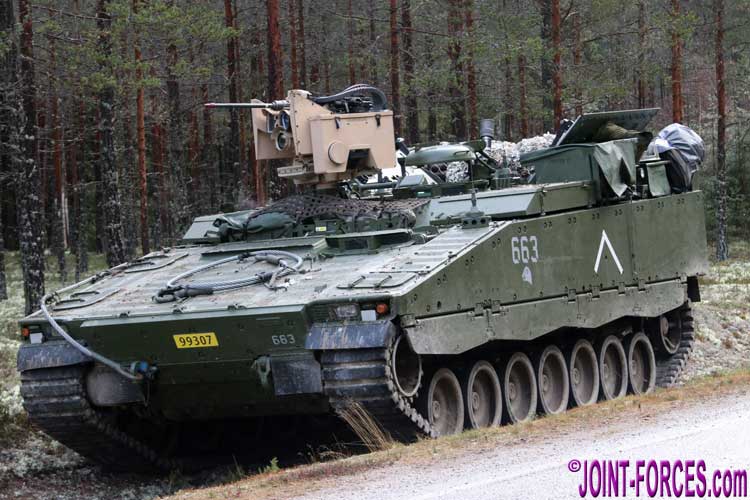
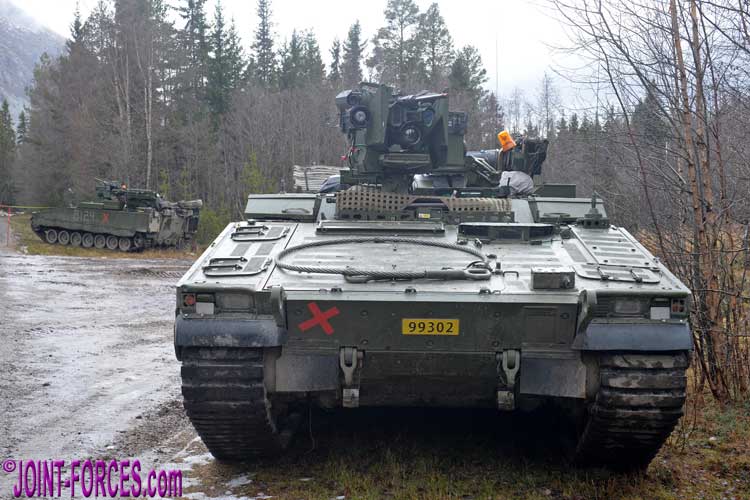
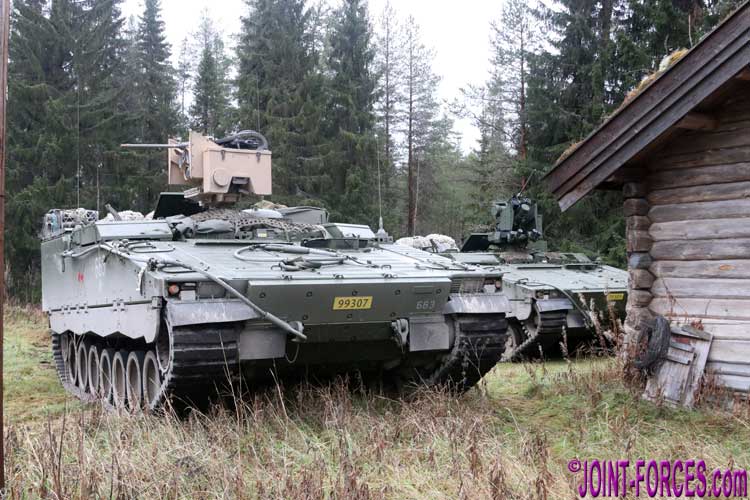
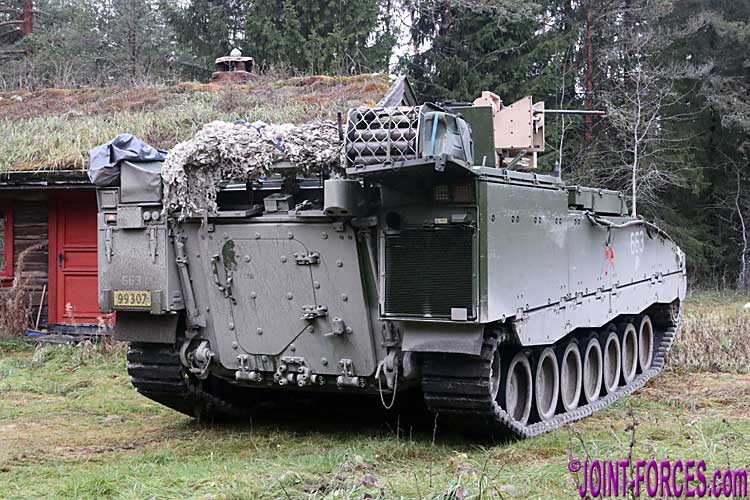
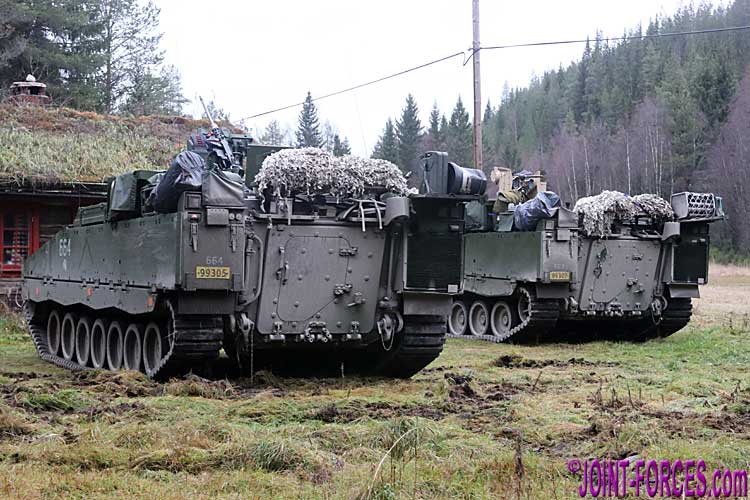
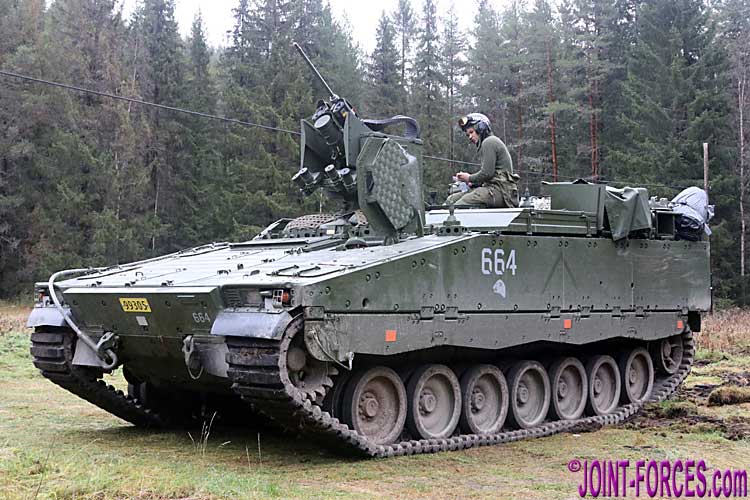
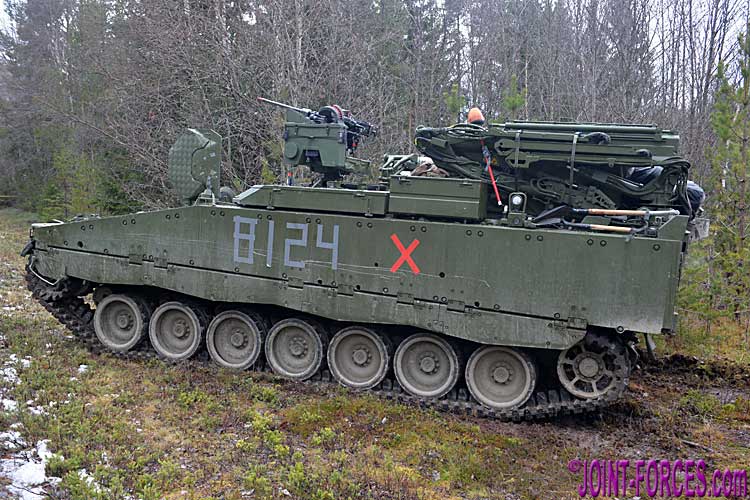
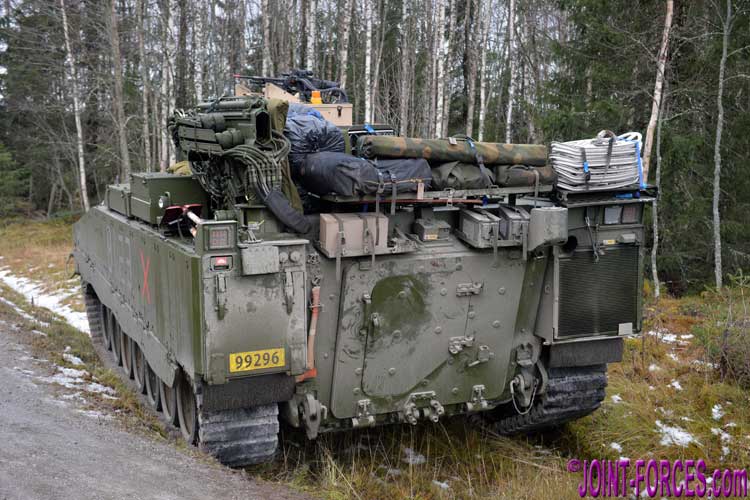


















Pingback : TRJE18 In Focus 09 ~ Norwegian Panser Bataljonen - Joint Forces News